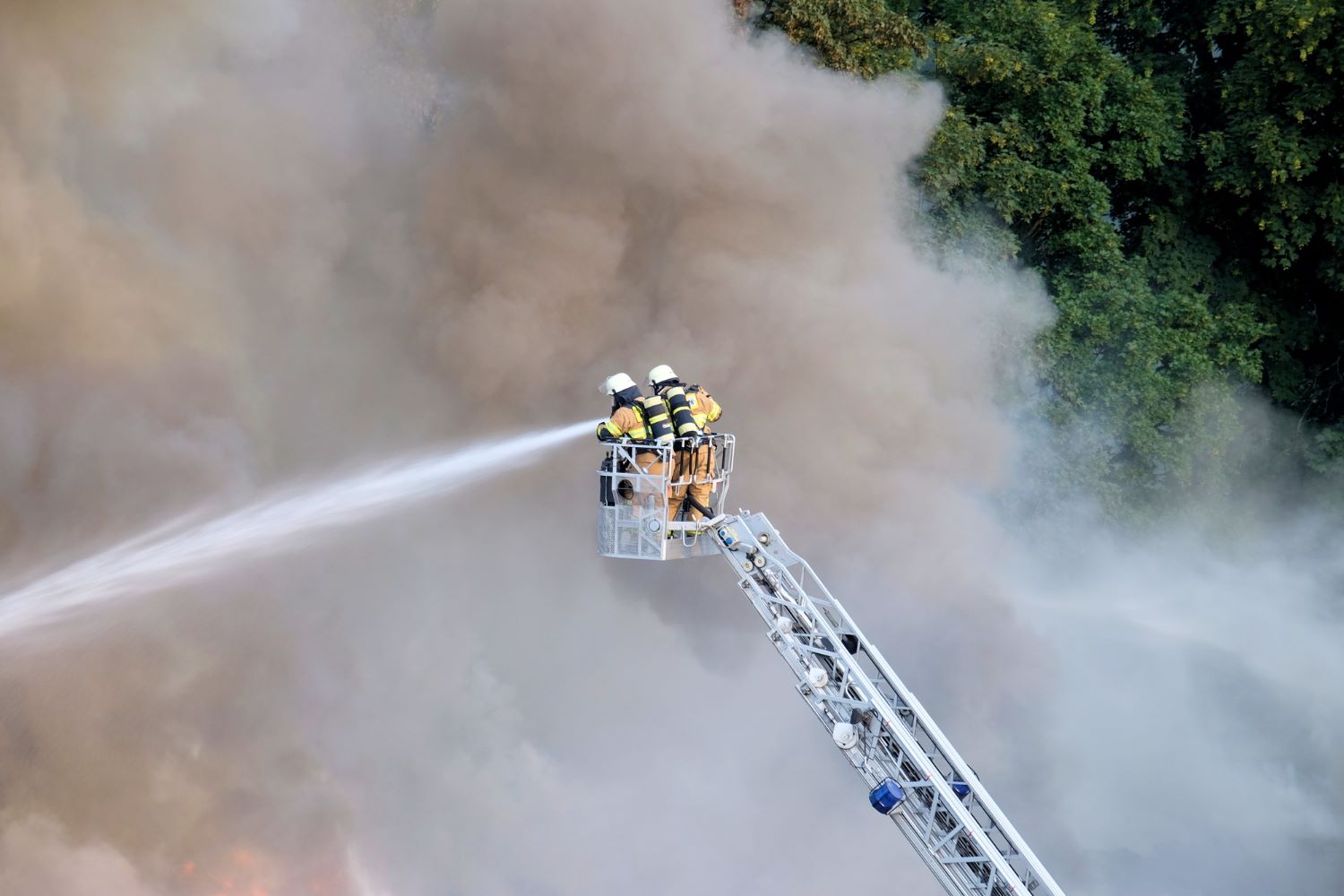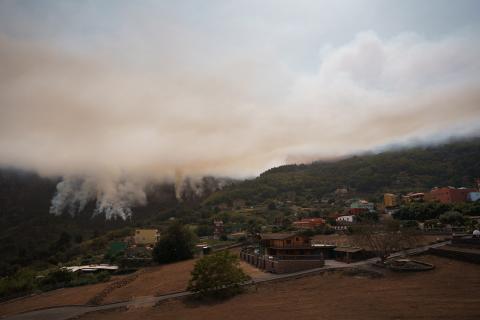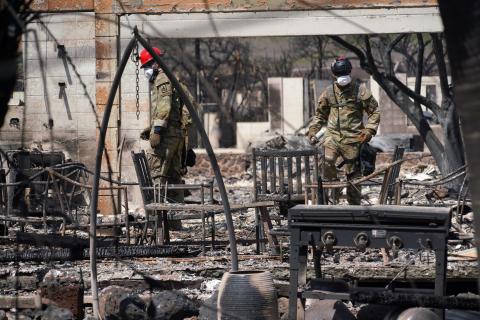Extreme fires have doubled in the last 20 years
The frequency and magnitude of extreme wildfires appear to have doubled in the last 20 years. Moreover, the six most extreme years for these events have occurred since 2017, according to a paper published in Nature Ecology & Evolution in which the authors used satellite data from 2003 to 2023.

Eduardo Rojas - incendios Nature Ecology EN
Eduardo Rojas Briales
Lecturer at the Polytechnic University of Valencia and former Deputy Director-General of the FAO
The press release reflects the study adequately. The study is of scientific quality. The issues that restrict the conclusions obtained are the limitation to satellite information without considering other relevant aspects such as the recent evolution of the fuel stock, the forest management applied to each area (intensive, extensive, null), the population density, etc. Leaving aside the factors that have to do with anthropic influence on the terrain makes it impossible to draw consistent conclusions. Similar situations occur when attempts are made to describe the status of large-scale forests purely on the basis of satellite information, ignoring information that can only be obtained on the ground, including issues of land use, tenure, etc.
The study fits with the available evidence, but with the limitations cited in the previous paragraph. For example, the increase in large fires in south-eastern (SE) Australia is undoubtedly related to climate change, but also to the abandonment of frequent but low-intensity fire practices by Aboriginal peoples and eliminated by settlers of European origin, exacerbated by the policy of systematically extinguishing all fires, similar to what happened in the western USA. In contrast, in northern Australia, with a larger Aboriginal population, the situation has evolved for the better with the recovery of ancestral controlled burning practices.
In the case of the European/Northern Mediterranean, the virulence of fires is undoubtedly due to the exacerbation of climate change, but no less to rural abandonment, active (repopulation) and passive (spontaneous encroachment) ambush and the policy of systematic extinguishing of all fires.
Only by integrating socio-economic variables and field observations can reasonable conclusions be drawn from such methodologies covering very different situations across the globe. One issue is to obtain satellite information on the evolution of forest areas or carbon stock, and another much more complex one is to analyse the causes of changes and how to address undesired trends.
Cristina Santín - incendios Nature Ecology EN
Cristina Santín Nuño
Senior scientist at the CSIC and head of the Department of Biodiversity and Global Change of the Joint Institute for Biodiversity Research (University of Oviedo-CSIC)
The press release reflects the study accurately. The study is of good quality, the only thing that strikes me is that, despite having 'climate change' in its title, they do not make any kind of analysis that directly relates their results to global warming. In other words, the authors see that in recent years there has been an increase in extreme fires globally and understand that this is related to climate change. Although there is no doubt that the two phenomena are related (at least I have no doubt), it would have been nice if they had presented some analysis to prove it.
This work corroborates what we already know: the fire problem is getting worse in many regions of the world. The problem is not that there are more or less fires in the world, but that fires are becoming more concentrated in some regions and are becoming larger and more intense. This increases their danger for both society and the environment.
The methodology of the work is correct. MODIS hotspots are widely used for such studies. In fact, two of the three authors of this study had already carried out a similar analysis for a shorter time series (2002-2013), but in that case they had not found trends (Bowman et al. 2017 Nature Ecology & Evolution).
We are facing increasingly extreme, large and dangerous fires, many of which are 'above extinction capacity'. That is, they cannot be extinguished by human means (they are extinguished when the weather changes and/or when they reach areas where there is no more vegetation to burn). These fires burn huge areas in a very short time and at a very high intensity, making them very dangerous both for the extinguishing devices and for the people living in those areas. Moreover, their environmental consequences are often also very negative, as the ecosystem has a hard time recovering.
The type of fire we face is changing. It is important that we, as a society, are aware of this and know how to act. Not knowing how to do it, not preparing for it, can cost us a lot: human lives, environmental disasters and great economic losses.
Jesús Santiago Notario - incendios Nature Ecology EN
Jesús Santiago Notario del Pino
Professor of the Department of Animal Biology, Edaphology and Geology of the University of La Laguna
The press release reflects the study quite accurately. Perhaps it should emphasise more that the published work refers to the largest incendiary events (i.e. radiant intensity, which is what is detected by remote sensing in the case at hand).
In my opinion, the study is of good quality. It also does a thorough analysis to eliminate possible biases. The choice of the 99.9th percentile ensures that the events chosen are truly representative.
It is obvious that the problem of large fires is getting worse year by year, and this is what forest managers and decision-makers say. But I can say no more, I am not in the business of meta-analysis, nor am I in the business of comprehensive reviews of data concerning this problem.
Of course, the authors have taken into account the confounding factors. The only limitations are given by the resolution of the images and the frequency of these images, but if one takes into account that these satellites have a high frequency relative to others, the problem is, in my opinion, minor.
We are facing yet another manifestation of the consequences of global warming. I found it extremely interesting that night-time temperatures and humidity no longer act as a brake on fires or their spread (I was unaware of this). This is further evidence of the seriousness of the problem.
Víctor Fernández García - incendios Nature Ecology EN
Víctor Fernández-García
Lecturer in the Department of Engineering and Agricultural Sciences at the University of León
In recent years we have experienced a certain social alarm about the worsening of fires, with catastrophic seasons in regions such as the Amazon, Australia or even the Iberian Peninsula, where some events have reached an unprecedented extent. However, there is little scientific evidence to support this perception at the planetary level.
This study demonstrates how extreme events, defined as the 0.01% of areas or tiles (22 × 22km) with the highest instantaneous energy released during a day, have doubled in the last two decades globally, mainly due to increased fire intensity in temperate and boreal coniferous forests, two key carbon storage biomes. The results are based on Fire Radiative Power (FRP) data from the MODIS satellite between 2003 and 2023. This source has significant spatial and temporal limitations to accurately characterise individual events, but is consistent over time and therefore robust for general trend analysis using large amounts of data. The results of the study are therefore robust and provide further evidence of the changing context in which we find ourselves, with a focus on the effects of climate change.
The results are far-reaching, as they reveal how we are changing the frequency of extreme events globally, which impacts a multitude of socio-economic and ecological aspects. However, we must be cautious not to confuse global trends with regional trends, as no significant trends were detected for the biomes that concern us in the Iberian Peninsula. Likewise, we should not lose sight of trends in burned area when determining the evolution of certain factors, such as the contribution of fires to carbon emissions or atmospheric pollution.
Calum Cunningham et al.
- Peer reviewed
- Communication



